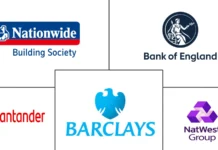The financial world is undergoing a silent revolution. As traditional banking models struggle to keep pace with the needs of today’s globally mobile users, digital-first platforms are stepping in to offer smarter, more inclusive solutions. One of the emerging names in this space is blackcat finance, a service built around the idea that access to reliable financial tools should not be bound by borders, bureaucracies, or excessive fees.
Table of Contents
Redefining Who Gets to Bank
One of the most persistent issues in global finance is exclusion. Millions of people—digital nomads, remote workers, expats, and even teens—often fall into the cracks of eligibility requirements that define traditional banking systems. Blackcat Finance is actively reshaping this reality by allowing users outside of the EU to open accounts with European IBANs and access services typically restricted to residents of specific regions.
This shift is significant. It means that a freelancer in Cape Town, a student in Seoul, or a remote worker in Buenos Aires can tap into a financial system designed for simplicity and transparency, without the hurdles usually faced by cross-border users.
A Low-Friction Model That Works
Many financial services claim to be “accessible,” but Blackcat Finance puts that concept into practice. Account creation is online, fast, and free. The moment a user completes registration; they gain access to a virtual Mastercard and a fully operational account. There are no monthly fees, no setup charges, and the physical card—while restricted to users with EEA address proofs—is shipped globally at no cost.
What’s more, users get access to value-added features like SEPA payments, crypto wallets, and cashback rewards. These aren’t stripped-down versions of financial tools, they’re full-service options integrated into single user experience. It’s a reminder that financial empowerment doesn’t have to be expensive, intimidating, or limited by geography.
Cryptocurrencies as a Bridge, not a Barrier
Cryptocurrency is often hailed as the future of finance, but for many, it still feels out of reach due to complex platforms and confusing interfaces. Blackcat Finance turns this challenge on its head. Users can hold, buy, sell, and transfer major crypto assets like BTC, ETH, and USDT within the same ecosystem they use for fiat banking.
This integration is more than just a feature—it’s a statement. It signifies a future where digital and traditional finance coexist, offering flexibility to users who want to diversify their financial lives without being forced to switch platforms or juggle multiple apps.
Design for the Margins: Teen Banking and Beyond
Financial literacy and responsibility often begin in adolescence, yet few banking platforms cater specifically to younger users. Blackcat Finance includes teens in its ecosystem, making it easier for parents to empower their children with basic financial tools and oversight. This not only builds trust early on but also introduces a new generation to digital banking habits that will likely define their future financial decisions.
In the broader context of underserved demographics, the platform’s global accessibility and minimal barriers make it attractive to immigrants, students, gig economy workers, and travelers—groups often overlooked by legacy banks.
Regulated Yet Flexible
It’s worth noting that Blackcat Finance is not some rogue startup operating in a regulatory vacuum. It is issued by Papaya Ltd., a licensed Electronic Money Institution under Malta’s financial authority. This provides users with an important layer of oversight and legitimacy without sacrificing agility or innovation.
Final Thoughts: A Quiet Revolution
The future of finance may not be defined by flashy logos or billion-dollar IPOs. It might be shaped instead by quiet disruptors—those building systems that simply work, without requiring users to fit into outdated molds. Blackcat finance fits squarely into this category.
By focusing on global accessibility, streamlined digital tools, and user-first policies, it is quietly rewriting the rules of who gets to participate in modern finance—and how.



























